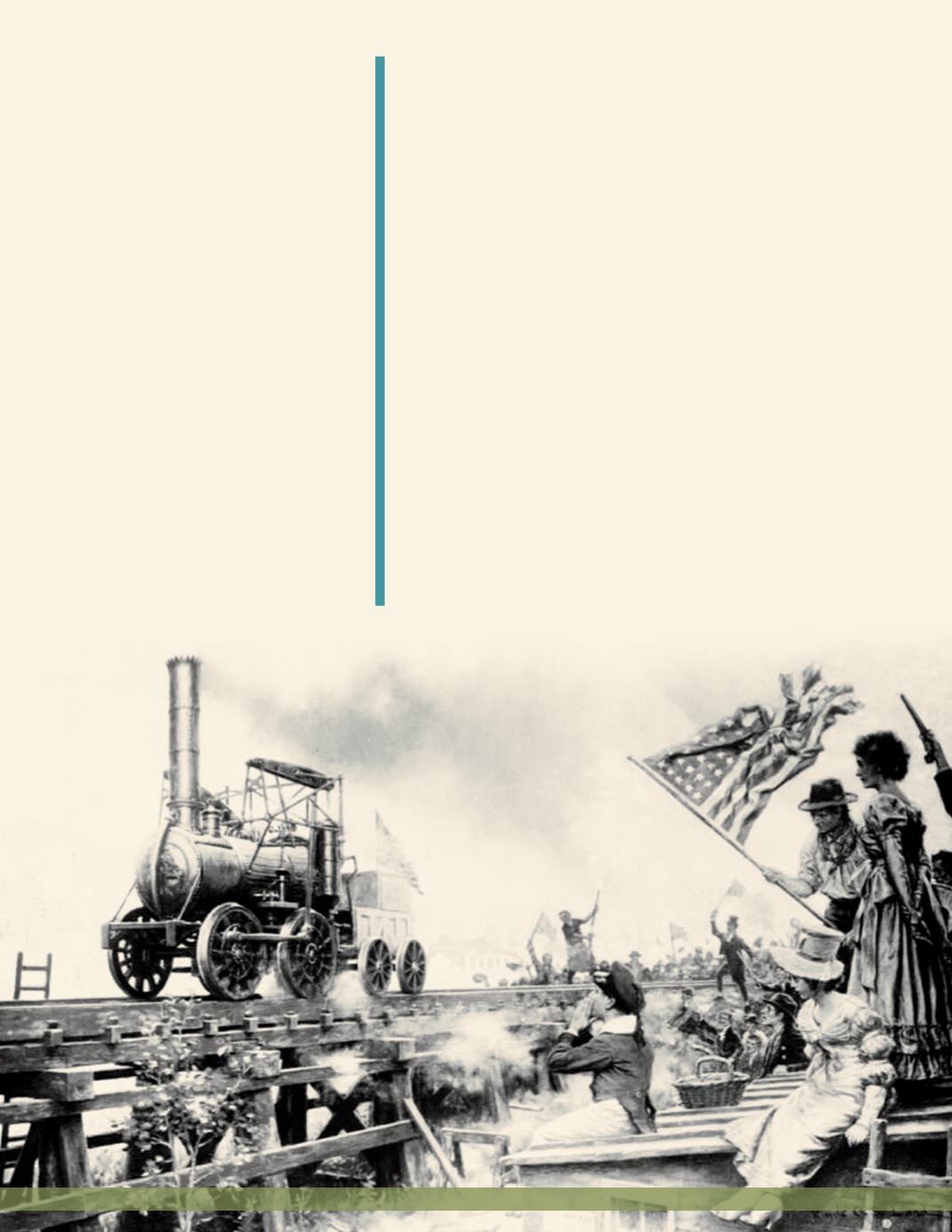
During this time in history, horses were slowly pulling canal
boats full of people and products through the network of our
waterways. At the same time, freight companies of Conestoga
wagons were competing for this trade. Each formof
transportation had its success story. But each transportation
mode was destined to be replaced by amore efficient, profitable
means of moving people and goods. Business people began
promoting the use of the steamengine. By the 1830s, the steam
engine emerged into the historical spotlight.
SteamLocomotives Become Superior
A faster and cheaper means of moving freight and
passengers appeared with the introduction of
railroads
.
Steamboats and railroads developed independently of each other.
As early as 1809, railroads were operating without a steam
engine. Wagons were pulled over wooden rails by horses. Recall
that canal boats were pulled on flatcars over rails on the Penn
Main Line Canal. In 1829, a
locomotive
was
imported
from
England to
Honesdale
in the northeastern part of our state.
However, the locomotive was too heavy for the wooden rails.
Later, iron tracks replaced wooden rails. In the 1830s, steam
engine locomotives becamemore practical. It was
Matthias
Baldwin
, of Philadelphia, who applied steampower to locomotives.
He is credited with building the first American steam train. His
train carried four passengers between Philadelphia and
Norristown
at 16miles per hour. He also was the first person to use coal
rather than wood as a fuel source. Coal was safer than wood, the
sparks fromwhich could cause a fire during drier weather. In his
life, Baldwin built more than 1,500 steam locomotives.
T
HE
S
TOURBRIDGE
L
ION
America’s railroad industry had its
birthplace in Honesdale,
Pennsylvania in 1829. This 1916
painting shows the Stourbridge Lion
on its first run. The steam
locomotive received its name from
the builder. Because the engine
was built in Stourbridge, England,
and had a lion painted on its front,
it was christened the Stourbridge
Lion. Because it weighed 7.5 tons,
it was too heavy for the wooden
rails in use at the time. Therefore,
its first run was also its last. At the
time, the cost to build the
Stourbridge Lion was $2,915.
Recently, theWayne County
Historical Society has begun a
project to build a full-scale, working
replica of the Stourbridge at an
estimated cost of $200,000.
SteamEngine Fever, Railroads, and Coal
69


